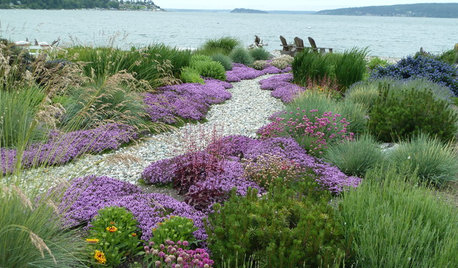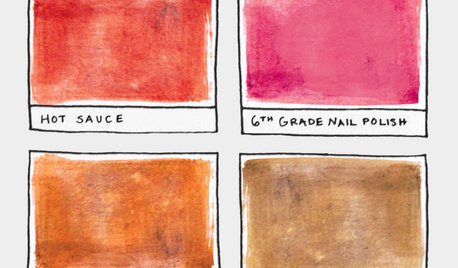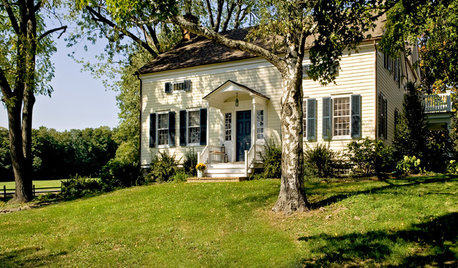Help! Is Purple Moor Grass -Phalaris arundinacea??
kanuk
16 years ago
Related Stories

INSPIRING GARDENSInside Houzz: A Waterfront Property Ditches the Grass for a Garden
New drought-tolerant plantings and outdoor gathering spaces help this California backyard take in the view without wasting space or water
Full Story
COLORWhat Goes With Purple Walls?
Make a plum wall come alive with art, warm metals, ivory, chartreuse, natural wood — and at least one wild card
Full Story
MOST POPULARMeet a Lawn Alternative That Works Wonders
Carex can replace turfgrass in any spot, is low maintenance and adjusts easily. Add its good looks and you’ve got a ground cover winner
Full Story
COLOROpposites Attract: Complementary Color Combos
Use the power couples of the color wheel — blue and orange, purple and yellow, red and green — to spice up any decor scheme
Full Story
PLANTING IDEAS7 Ways to Use Drifts and Masses In Your Garden
Whether in formal or natural landscapes, grasses or succulents planted en masse elevate the garden
Full Story
FUN HOUZZ16 Creative Paint Color Names We Haven't Seen — Yet
Someday, the namers of new paint colors will finally run out of ideas. We're here to help
Full Story
CURB APPEALClues to Finding the Right Color for Your House
Waffling over the rainbow of color options for your home's face? This advice from an architect can help
Full Story
DECORATING GUIDESCool Color Palettes: Enviable Green and Blue Spaces
Freshen up tired interiors with dewy to inky hues that harmonize even as they help each other stand out
Full Story
HOUZZ TOURSMy Houzz: Boutique Hotel Ambience in a Manhattan Bachelor Pad
Chanel, MoMa and nature all had a hand in influencing this city apartment's design, but the killer skyline views needed no help at all
Full Story
HOUZZ TOURSMy Houzz: Personal Touches Keep Things Fun in a Historic Vancouver Home
DIY updates and bold patterns help transform an 1898 Victorian
Full StoryMore Discussions







grass_guy
grass_guy
Related Professionals
Chattanooga Landscape Architects & Landscape Designers · Marina Landscape Architects & Landscape Designers · Signal Hill Landscape Architects & Landscape Designers · Pelham Landscape Contractors · Cockeysville Landscape Contractors · Fort Worth Landscape Contractors · Marlborough Landscape Contractors · West Chester Landscape Contractors · Champlin Solar Energy Systems · Cheshire Solar Energy Systems · Asheboro General Contractors · Eau Claire General Contractors · Fort Lee General Contractors · Goldenrod General Contractors · Newburgh General ContractorskanukOriginal Author
kanukOriginal Author
gardengal48 (PNW Z8/9)
kanukOriginal Author
grass_guy
kanukOriginal Author
gardengal48 (PNW Z8/9)
kanukOriginal Author